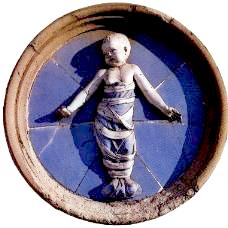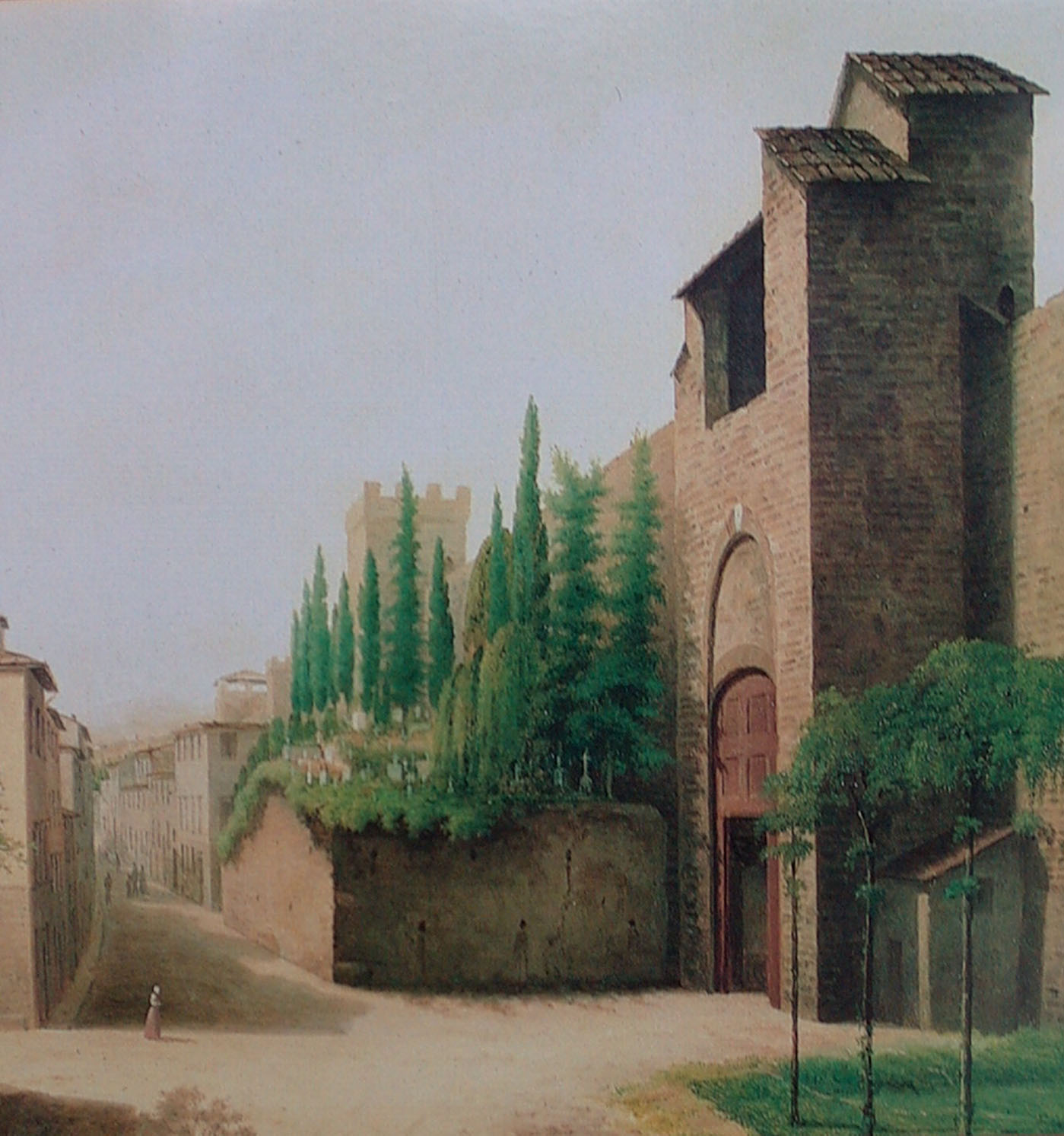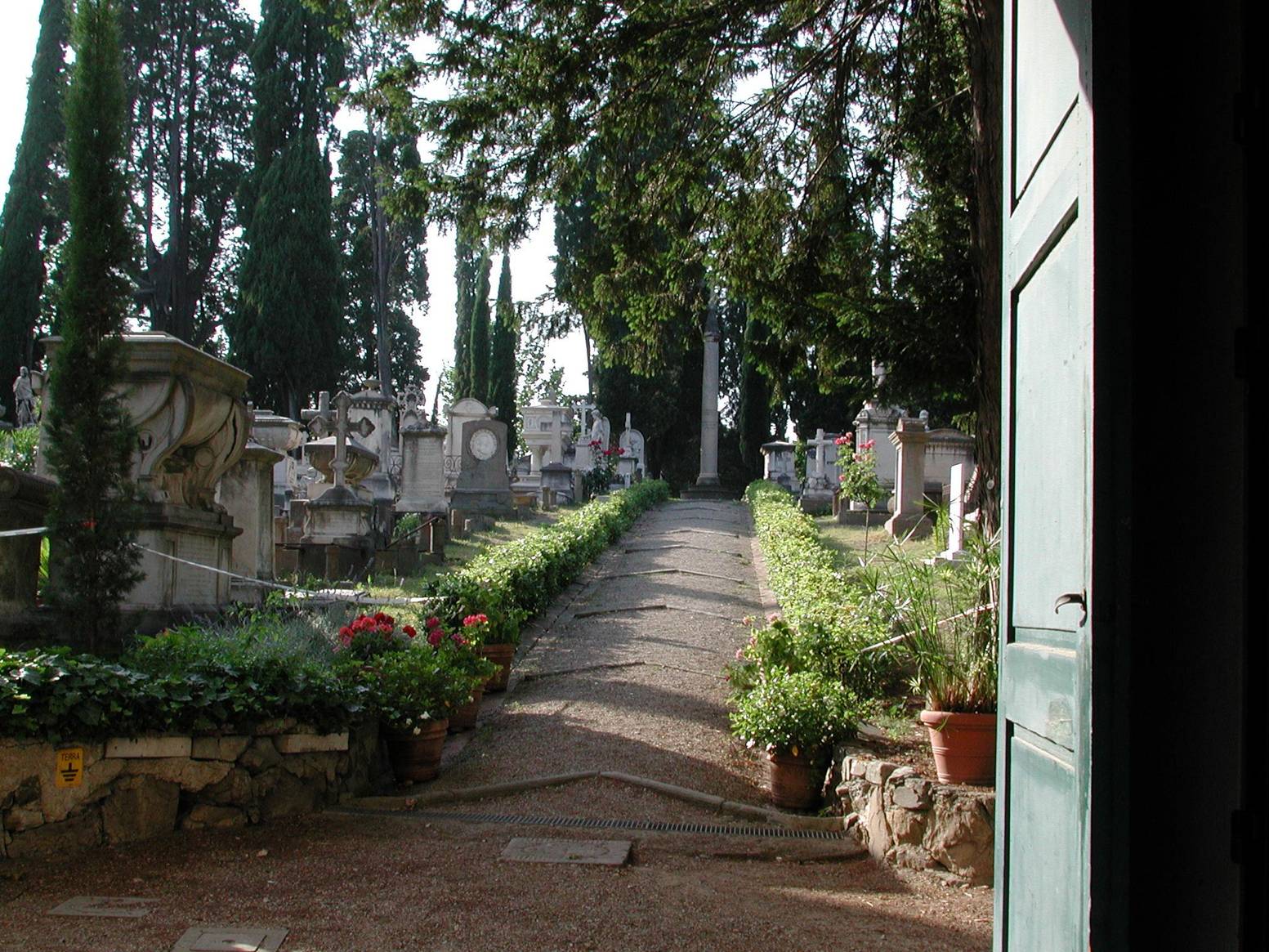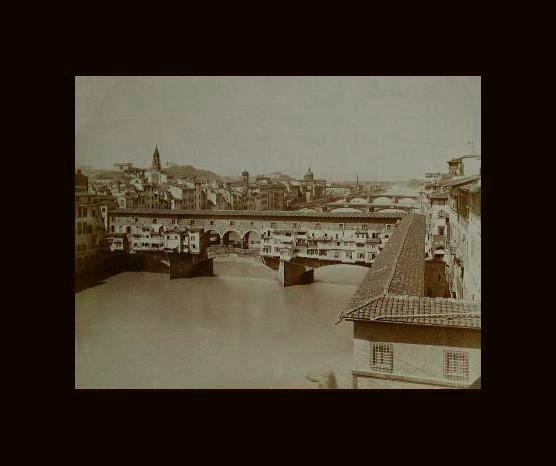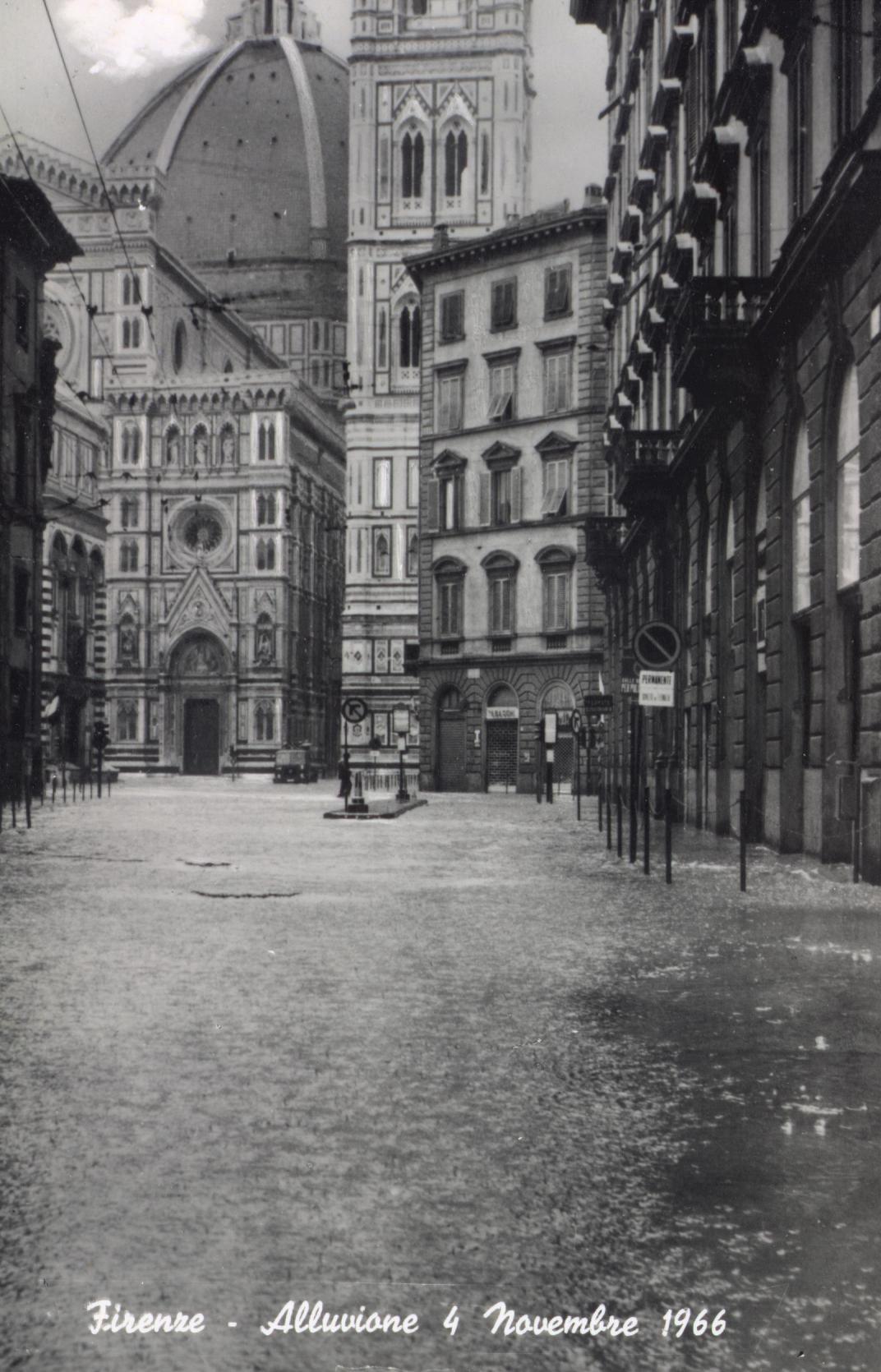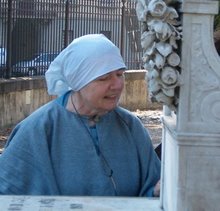We say the Swiss-owned so-called 'English' Cemetery is an archive in marble. It is also the Bible incised in stone. Passages in Hebrew, Greek, Russian, Rumantsch, French, German and English, generally being the King James Bible in English, the Lutheran Bible in German, the Calvinist Bible in French. In this time period Italian Catholics were forbidden the Bible in the vernacular, that only changing with Vatican II. Some of our burials, such as that of Rosa Madiai, are of persons imprisoned for their use of the Bible in Italian in the nineteenth century. The German Biblical passages are often those set to music by Johann Sebastian Bach. The great central column, surmounted by the San Giovanni Cross of lilies and roses set up by Pietro Bazzanti in honour of the visit of the King of Prussia, states in French 'Je suis la Résurrection et la vie, Celui qui croit en moi vivra, Quand même il seroit mort. St Jean XI.25. Fréderic Guillaume, Roi de Prussia, MDCCCLVIII'.
//=How many times a particular scriptural verse is used on the various tombs
Genesis 24.31 Blessed of the Lord /
Numbers 6.24-26 The Lord bless thee and keep thee, The Lord make his face shine upon thee and be gracious unto thee; The Lord lift up his countenance upon thee and give thee peace /
II Samuel 10.12 It is the Lord. Let him do that which seemeth him good /, 12.23, I shall go to him, but he shall not return to me /, in Italian /
Job 1.21, The Lord gave and the Lord has taken away, Blessed be the name of the Lord /////////, in Italian ///, in French /, 3.17 There the weary be at rest /, 19.25, I know that my Redeemer liveth //, Ich weiss dass mein erloeser lebet, in German /, 23.11 Meis pei s'ha artignu vta seis fastizis, eu ha salva sia via, e non sun giunghi da quella, in Rumantsch /, 29.11 When the ear heard her, then it blessed her, and when the eye saw her it gave witness to her /, 30.16 in Italian /
Psalms 3.4 I cried unto the Lord and he heard me /, 5.1 /, 16.11 In Thy presence is fullness of joy, at Thy right hand are pleasures evermore /, 23.1 The Lord is my Shepherd, I shall not want, He maketh me to lie down in green pastures, he leadeth me beside the still water /, Il Signore è mio pastore, nulla mi mancherà, in Italian /, 26.4, 31.5 Into Thy hand I commit my spirit, Thou hast redemmed me, O Lord God of Truth /, 34.19 Le juste a des maux en grand nombre, mais l'Eternel le delivre de tous /, 34.41 I sought the Lord and he heard me /, 36.9 With Thee is the fountain of life, In Thy light shall we see light /, 38.15 For in Thee, O Lord, do I hope, Thou wilt hear, O Lord, My God /, 49.15 God will redeem my soul from the power of the grave /, 62.5 My soul, wait thou only upon God, in Italian //, 62.7 Quoiqu'il en soit il est mon rocher, ma deliverance e ma haute retrait, je ne serait point ebranle /, 73.26 My flesh and my heart faileth, but God is the strength of my heart and my portion for ever /, 116.5 L'eternel est pitoyable et notre Dieu fait misericorde, in French, 116.15 Precious in the sight of the Lord, is the death of his saints /, in Italian /, 117.2 For his mercy endures forever, in French /, 120.1 I cried unto the Lord and he heard me /, 121.7 The Lord shall keep thee from all evil, Yea it is even He that shall keep thy soul /, 126.5 They that sow in tears shall reap in joy /, 130.5, in French /, 145.2, I will bless Thy holy name, O Giod, forever and ever /, 172.2 He giveth his beloved sleep /
Proverbs 31.28 Her children arise up and call her blessed //
Song of Solomon 8.6-7 Love is strong as death; Many waters cannot quench love, neither can the floods drown it
Isaiah 32.17 And the work of righteousness shall be peace and the effect of righteousness quietness, assurance for ever /, 40.11 He shall gather the lambs with his arms and carry them in his bosom //, 43.1 Ne crains point car je t'ai rachete, in French, 43.2 When thou passest through the waters, I will be with thee, and also the floods they shall not overflow thee /, 60.20 Deine sonne wird, nicht mehr untergehen noch dein mond den schein verlieren denn der Herr wird dein ewiges licht, in German /, 60.24 We must, through much tribulation, enter the Kingdom of God /
Jeremiah 31.3 The Lord hath appeared of old unto me, saying Yea I have loved thee with an everlasting love, therefore with loving kindness have I drawn thee /
Daniel 7.14, Thine is the Power and the Glory /
Malachi 3.17 And they shall be mine, saith the Lord of hosts, in that day when I make up my jewels.
Matthew 5.5 Blessed are the meek, for they shall inherit the earth /, 5.6 Blessed are those who hunger and thirst for justice, in French /, 5.7 Blessed are the merciful, for they shall obtain mercy/, 5.8 Blessed are the pure in heart, for they shall see God ////////, in German /, 5.9 Selig sind die Reines Herzens sind denn sie werden Gott shauen, in German /, in French /, in Italian /, 6.10 Thy will be done //////, 6.13 Thine is the Power and the Glory /, 9.13 But go ye and learn what that meaneth, I will have mercy, and not sarifice: for I am not come to call the righteous but sinners to repentance /, 9.24 in French /, She is not dead but sleepeth ///////, in French /, in Italian /, 11.26 Even so Father for it seemed good in Thy sight //, 11.28 Come unto me all ye that are heavily laden //, in French //, in German /, 12.43 Then shall the righteous shine forth as the sun in the Kingdom of their Father /, 14.27 It is I, be not afraid /, in French /, 18.2 Jesus called a little child unto him /, 19.14 Suffer little children /, in Italian /, Of such is the kingdom of heaven ///, 25.13, Watch therefore for ye know neither the day not the hour wherein the Son of man cometh /, Veillez donc car vous ne savez ne le jour ne l'heure ou le fils de l'homme viendra, in French //, 25.21 Well done, thou good and faithful servant //, 25.24 Come ye blessed of my Father, inherit the kingdom prepared for you /, 26.42 Thy will be done /////, 27.63 Resurgam, in Latin /
Mark 5.39 in French /, She is not dead but sleepeth ////////, in French /, in Italian /, 10.14 Suffer the little children, in Italian //, 10.50 And he, casting away his garment, rose and came to Jesus /,
Luke 1.46 L'anima mia magnifica il Signore e lo spirito mio festeggia in Dio mio salvatore /, 8.52 She is not dead but sleepeth /////////, in French //, in Italian /, 11.2 Thy will be done /////, 18.16 Suffer the little children come unto me and forbid them not, for of such is the Kingdom of God //, in Italian /, 20.36 Neither can they die anymore, for they are equal unto the angels and are the children of God being the children of the Resurrection /, 23.50 He was a good man and a just /
John 5.24 is passed from death unto life /, 6.37 He that cometh unto me, I will in no wise cast out /, 10.28 I give them eternal life /, 11.23 Thy brother shall rise again /, 11.25-26 I am the Resurrection and the Life - saith the Lord - He that believeth in me, though he were dead, yet shall he live /, in Italian //, in French ///, 11.35 Jesus wept /, 13.7 Vous ne savez maintenant ce ve je fais mais vous la saurez apres, in French /, 14.2 Nella casa del Padre mio vi sono molte stanza, /, 14.3 And if I go and prepare a place for you, I will come again, and receive you unto myself, that where I am there may ye be also /, 14.6 I am the way, the truth and the life /, in Italian /, 14.27 My peace I give unto you /, 17.11 & 22 That they may be one / 27.3 Haec est vita aeterna ut te cognoscant solum verum Deum et quem tu misisti Jesum Christum, in Latin /,
Romans 6.23 The gift of God is eternal life, through Jesus Christ our Lord /, 11.33 O profondeur des richesses et de la sagesse et de la connoissance de Dieu que ses jugements sont inpenetrables et que ses voies son incomprehensible, in French /,12.10 [Be kindly affectioned one to another with brotherly love; in honour preferring one another]
I Cor 15.19 If in his life only we have hope in Christ we are of all men most miserable /, 15.44 It is sown a natural body, it is raised a spiritual body /, 15.53 This corruption must put on incorruption //, 15.56 Oh Death, where is thy sting, Oh grave where is thy victory? //, 15.57 Thanks be to God, which giveth us the victory ///
II Cor 1.3 Blessed be God even the Father of our Lord Jesus Christ theFather of mercies and the God of all comfort who comforteth them which are in any trouble by the comfort wherewith we ourselves are comforted /, 12.9 My strength is made perfect in weakness /
Ephesians 2.4 Charitatem dilexit, in Latin /, 2.8 Vous êtes sauvés par grace, par la foi et cela ne vient pas de vous, c'est un don de Dieu, in French /, 2.13 But now in Christ Jesus who sometime were far off /
Galatians 5.22 The fruit of the Spirit /, 6.14 in Italian /
Philippians 1.21 To me to die is gain /, Car Christ est ma vie, et la mort m'est un gain, in French //
Colossians 3.3-4 We are dead and our life is hid with Christ in God /
I Thessalonians 4.13 But I would not have you to be ignorant, brethren, concerning them which are asleep, that ye sorrow not even as others which have no hoped for if we believe that Jesus dioed and rose again even so /, 4.14 Them also which sleep in Jesus, will God bring with him /////, in French /
II Timothy 4.8 Henceforth there is laid up for me a crown of righteousness which the Lord the righteous judge shall give me at that day, and not to me only but unto all them that also that love his appearing /, 4.11-12 J'ai combattu le bon combat j'ai fini ma course, j'ai gardé la foi,. Au reste, la couronne de justice m'est reservée, in French //
Titus 2.13 Looking for the blessed hope /
Philemon 16 Not now as a servant but above a servant a brother beloved /
Hebrews 4.9 There remaineth therefore a rest to the people of God /, 6.19 Which hope we have as an anchor of the soul, both sure and steadfast /, 12.2 Looking unto Jesus, the author and finisher of our faith //, 13.5 Fear not, I will never leave thee nor forsake thee /, 13.8 Gesu Cristo è l'istesso ieri, oggi, ed in eterno, in Italian /, 13.14 Nous n'avons point ici bas de cité permanente mais nous cherchons celle qui est a venir, in French /
I Peter 4.12 Beloved think it not strange concerning the fiery trial which is to try you, as though some strange thing happened unto you /, 4.13 But rejoice inasmuch as ye are partakers of Christ's sufferings; that when his glory shall be revealed ye may be glad also with exceeding joy /, 5.7 Umiliatevi gettando sopra lui tutta la vostra sollecitudine perciocché egli ha cura di voi, in Italian /
James 1.22 But be ye doers of the word and not hearers only, deceiving yourselves /
I John 1.7 The blood of Jesus Christ cleanseth us from all sin /, 2.17 in Italian /, 4.10 Herein is love, not that we loved God, but that he loved us /, 4.16 God is Love /, He that dwelleth in Love, dwelleth in God and God in him /, 4.18 Perfect love casteth out fear /
Revelation/Apocalypse 1.5-6 Unto Him that loved us and washed us from our sins in his own blood, and hath made us kings and priests unto God and his Father; to Him be glory and dominion for ever and ever /, 7.14 These are they which come out of the great tribulation /, 7.17 L'agneau qui est au milieu du trone les paitra et les conduira aux sources d'eaux vives et Dieu essuiera toute larme de leurs yeux /, 14.13 Blessed are the dead which die in the Lord, Yea, saith the Spirit, that they may rest from their labours and their works do follow them /////////////, in German /, in Italian /, in French //, 22.5 And there shall be no night there /











